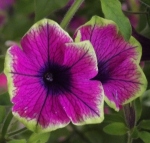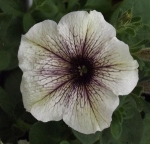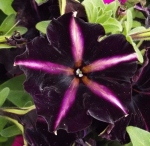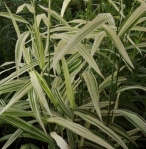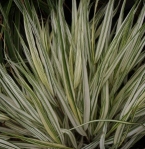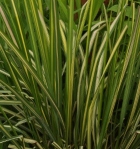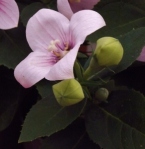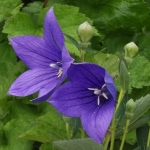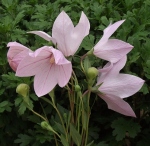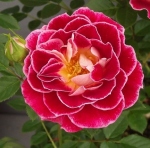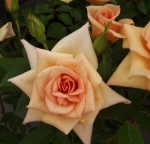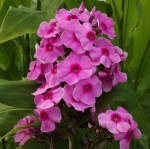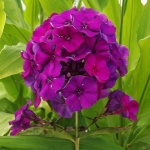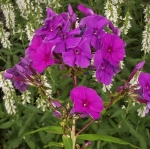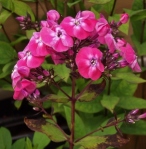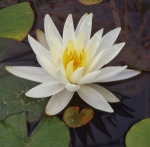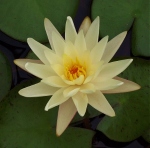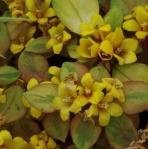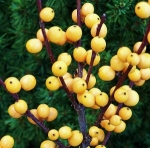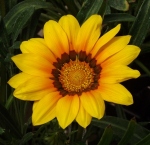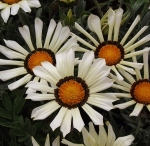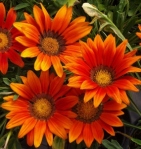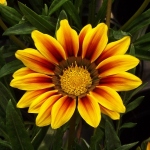 Coreopsis rosea ‘American Dream’ – This compact Tickseed forms a dense, slightly spreading clump with soft pink daisies (with a contrasting yellow eye) borne from June to September. If the plant goes to seed all at once, simply shear the faded flowers and new ones will form. It prefers part to full sun and evenly moist soils. Grows 8-16″ high by 18″+ wide. Hardy to zone 4.
Coreopsis rosea ‘American Dream’ – This compact Tickseed forms a dense, slightly spreading clump with soft pink daisies (with a contrasting yellow eye) borne from June to September. If the plant goes to seed all at once, simply shear the faded flowers and new ones will form. It prefers part to full sun and evenly moist soils. Grows 8-16″ high by 18″+ wide. Hardy to zone 4.
 Coreopsis verticillata ‘Zagreb’ – An RHS Award of Garden Merit winner with 1″ wide bright yellow daisies from summer through to fall which attract butterflies. Absolutely striking when planted behind or combined with Lavandula angustifolia ‘Hidcote’. It develops into airy clumps that never seem to overwhelm adjacent perennials. Grows 15-18″ high by 15″ wide. Hardy to zone 4.
Coreopsis verticillata ‘Zagreb’ – An RHS Award of Garden Merit winner with 1″ wide bright yellow daisies from summer through to fall which attract butterflies. Absolutely striking when planted behind or combined with Lavandula angustifolia ‘Hidcote’. It develops into airy clumps that never seem to overwhelm adjacent perennials. Grows 15-18″ high by 15″ wide. Hardy to zone 4.
 Coreopsis x ‘Limerock Dream’ – A completely new colour for Coreopsis with sunset tones of pink with apricot centers in late spring (shown) shifting to orange tones in summer. It is quite drought tolerant once established and very attractive to butterflies. Cut back lightly in midsummer to promote a secondary bloom flush. Grows 16-18″ high by 30″. Zone 7.
Coreopsis x ‘Limerock Dream’ – A completely new colour for Coreopsis with sunset tones of pink with apricot centers in late spring (shown) shifting to orange tones in summer. It is quite drought tolerant once established and very attractive to butterflies. Cut back lightly in midsummer to promote a secondary bloom flush. Grows 16-18″ high by 30″. Zone 7.
 Coreopsis grandiflora ‘Early Sunrise’ – The most common variety of Coreopsis grandiflora available with large semi-double blooms of golden yellow from early summer to fall as long as you deadhead the spent flowers. It is an All-American and Fleuroselect award winner. Makes a long-lasting cut flower. Divide in spring. Grows 20″ high by 16-24″ wide. Hardy to zone 4.
Coreopsis grandiflora ‘Early Sunrise’ – The most common variety of Coreopsis grandiflora available with large semi-double blooms of golden yellow from early summer to fall as long as you deadhead the spent flowers. It is an All-American and Fleuroselect award winner. Makes a long-lasting cut flower. Divide in spring. Grows 20″ high by 16-24″ wide. Hardy to zone 4.
 Coreopsis x ‘Limerock Ruby’ – A more tender, hybrid Coreopsis (a chance seedling from a cross of Coreopsis rosea and verticillata) with beautiful ruby-red daisy flowers throughout the summer. As with most Coreopsis, it too benefits from a light shearing when the plant goes to seed. It is quite tender, but still worth growing as an annual. Grows 18-24″ high by 24-30″ wide. Hardy to zone 8.
Coreopsis x ‘Limerock Ruby’ – A more tender, hybrid Coreopsis (a chance seedling from a cross of Coreopsis rosea and verticillata) with beautiful ruby-red daisy flowers throughout the summer. As with most Coreopsis, it too benefits from a light shearing when the plant goes to seed. It is quite tender, but still worth growing as an annual. Grows 18-24″ high by 24-30″ wide. Hardy to zone 8.


